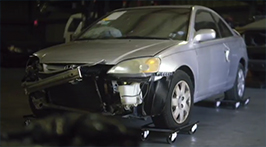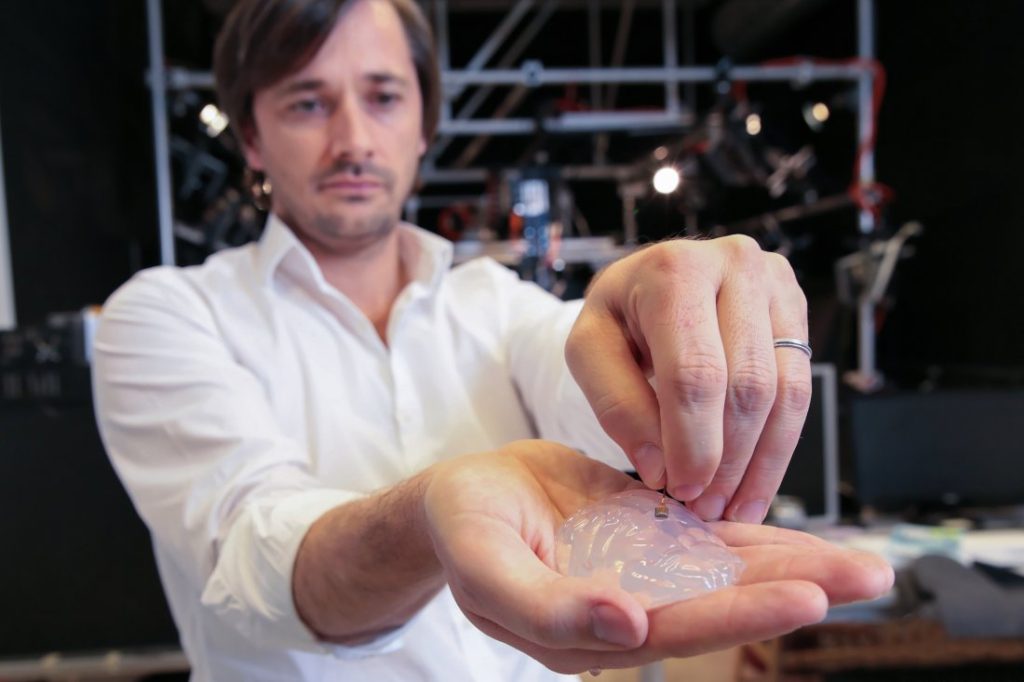Wireless Technology Helps Primate Brain Overpower Paralysis
Wireless Technology Helps Primate Brain Overpower Paralysis
Scientists successfully tested a new wireless application on two rhesus macaques—monkeys native to south and central Asia. The operation bypassed paralysis in the primates using implants that reconnected the brain to areas of the body cut off due to nerve damage. The technology is not new; scientists have been using similar techniques in the upper body for years. But this research by the EPFL, École Polytechnique Fédérale de Lausanne, a public institute of technology located in Lausanne, Switzerland, is different in several respects. For the first time tests on the lower body were effective and the scientists were able to artificially reconnect brain activity to the spinal cord. Not to mention that they did all of this without using wires.
The tests were conducted on two monkeys in China, each who had one leg temporarily paralyzed for the study. The procedure, carried out in Asia because of animal rights laws in the United States and Europe, rerouted the monkey’s brain signals to the appropriate nerve endings, which allowed them to walk despite their induced paralysis.
Some experts believe that the brain recordings and the nerve stimulation technologies used in the application will eventually be applied to paralyzed human beings with the hopes of seeing some of them walk again. Others see this application as a tool for rehabilitation therapists and some do not believe the technology is nuanced enough to work in humans at all.
But don’t tell that to Grégoire Courtine, who leads the research for the EPFL.
“The brain is in control,” he said and explained that his team can, “extract the general intention of movement.” Courtine has spent the last decade learning how the spinal cord can be manipulated to recreate different physical actions like walking. “What’s key here is that we stimulate to induce the desired movement of the animal.”
Courtine’s application includes two transplants, one in the brain and a second in the spine below the cause of paralysis. The sensors in the brain read the intentions of the primate, the message is then decoded and sent to the device in the spine, which releases electricity to the correlated nerves that create the action.
As far as getting this technology ready for humans?
“It’s got a long way to go,” said Dr. Ali Rezai, who leads the Neurological Institute at Ohio State. Rezai explained that the motor cortex—the area of the brain that controls voluntary movements like walking—is located much farther inside the human brain than in the monkey brain and the current technology would have to adapt to complexities that do not exist in primates. Rezai did go on to say that, “This study shows we can take brain signals and leverage them and link them to leg movements, which has not been shown before.”
He conceded Courtine’s work “accelerated the field.”
Rezai is the doctor that restored movement to Ian Burkart’s right hand, which garnered national media attention earlier this year. Burkart, 24-years old, was paralyzed at the age of 19, when he broke his neck diving into the ocean and slamming his head against the seafloor. This past April, Rezai used the brain implant technology to send Burkart’s brain signals to a mechanical sleeve—which allowed him to recover control of his hand—not to a second implant in his arm or spine. The second notable difference, Burkart and the sleeve had to be connected to a computer to function, Courtine’s latest tests in China were completely wire free.
Courtine and the EPFL have announced plans to test the wireless implants in humans within the next two years despite detractors calling for additional clinical trials with larger groups of animals before human testing is approved.
“There are many challenges ahead,” admitted Courtine. “It may take several years before all the components of this intervention can be tested in people.”
In 2012, four years after two monkeys first learned to control a mechanical arm through their brain implants, the first paralyzed primate regained control of his own hand using a similar device. Four years after that and Ian Burkart became the first human to successfully use the technology (he was able to play a video game). This year, Courtine and his international team learned from the past achievements and extended the technology from the hands to the feet, while cutting the cord and going wireless.
If the technology progresses at the same historical rate, Courtine’s application will be ready for human beings four years from today in the year 2020.
Approximately 33,000 tire-related crashes occur each and every year, resulting in about...
The Ford C-Max Energi Electric car is being blamed for starting more...
“The findings in this analysis conducted for The Safety Institute are disturbing,...

